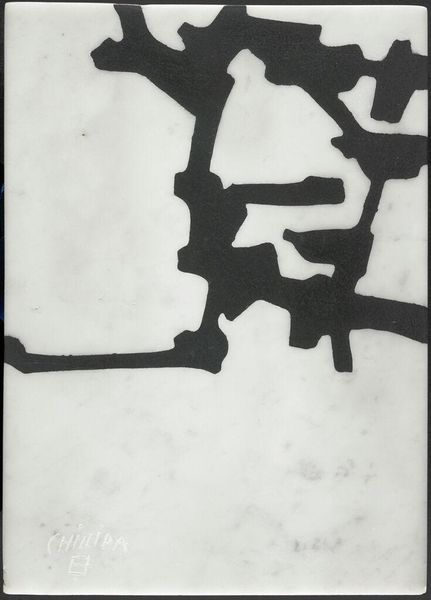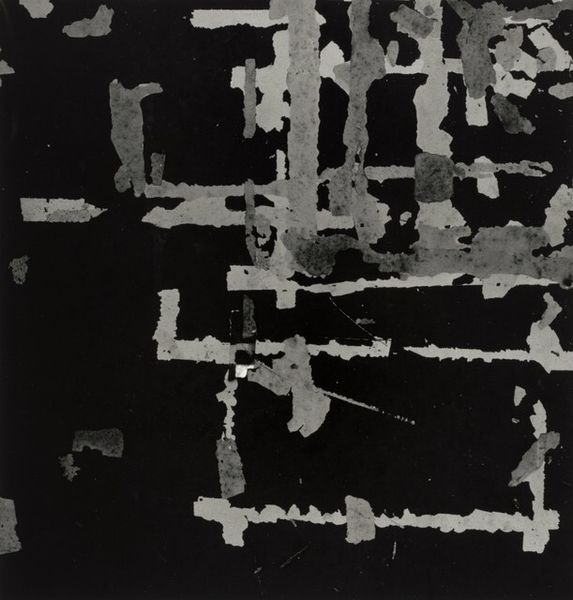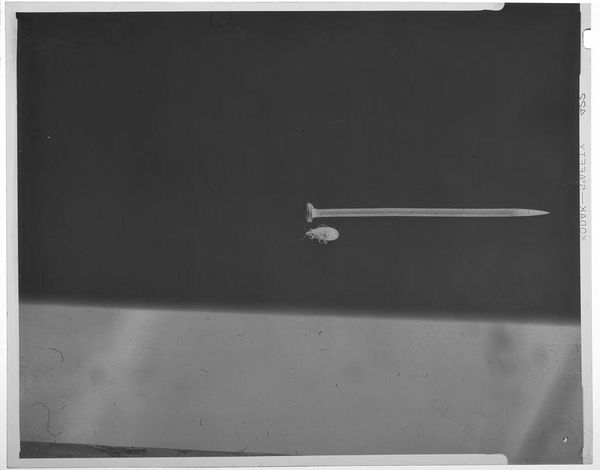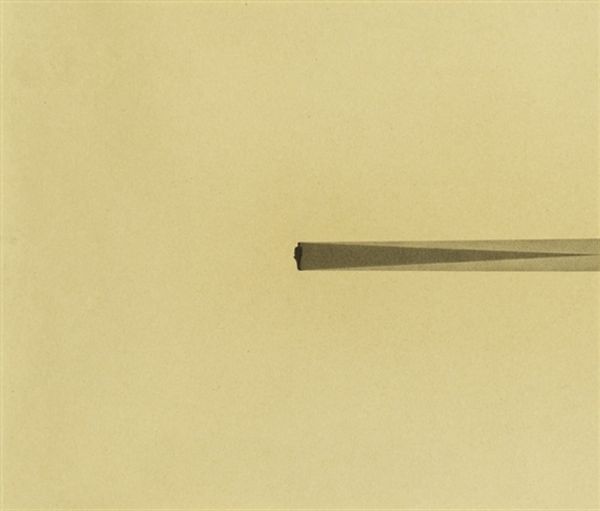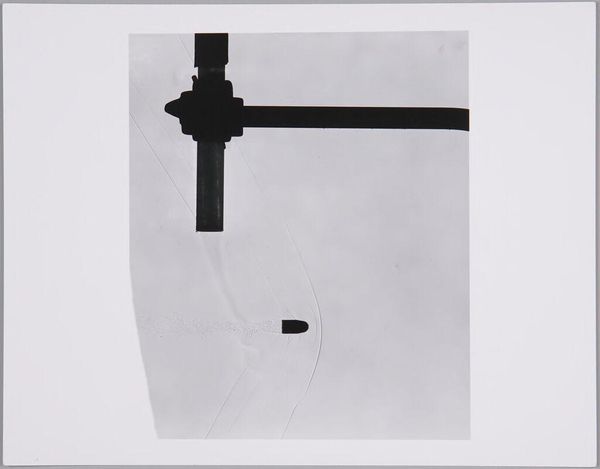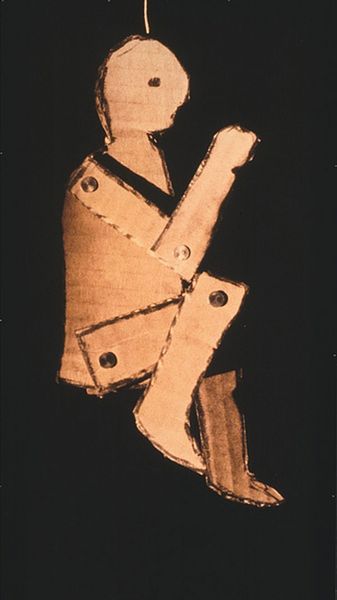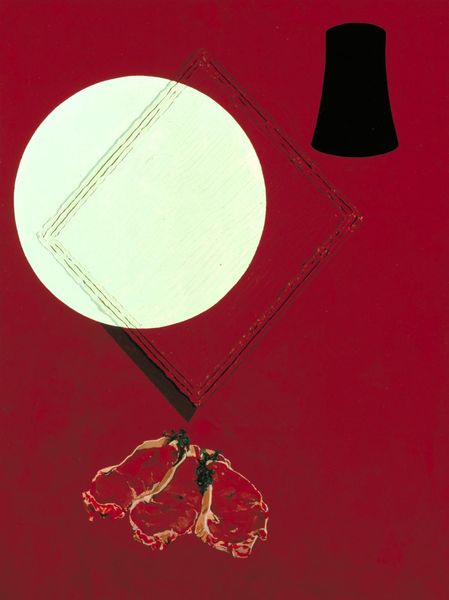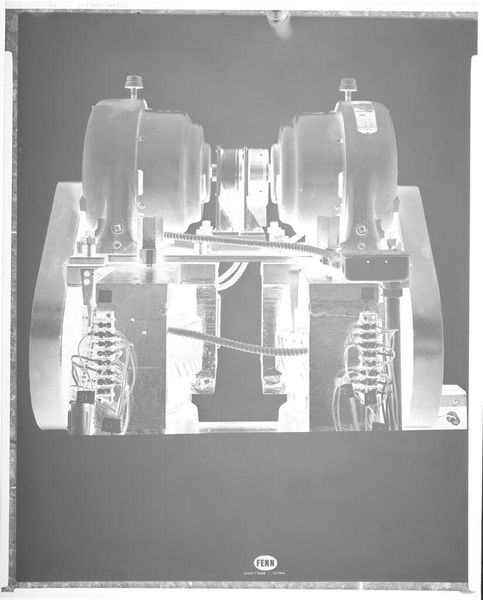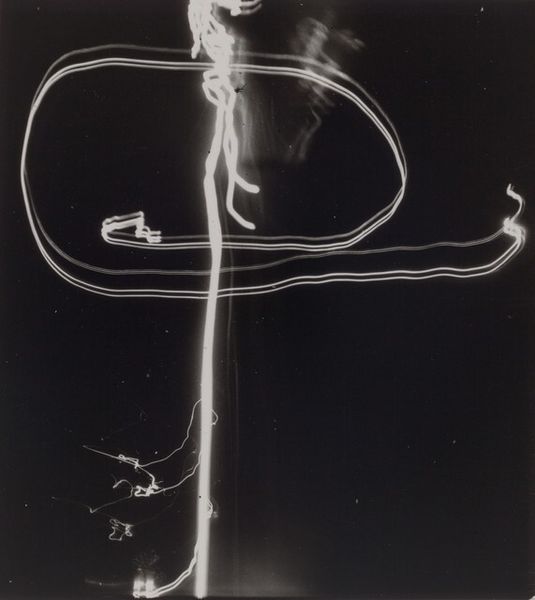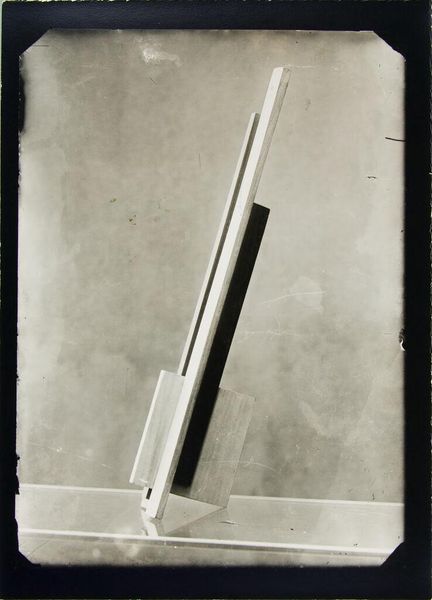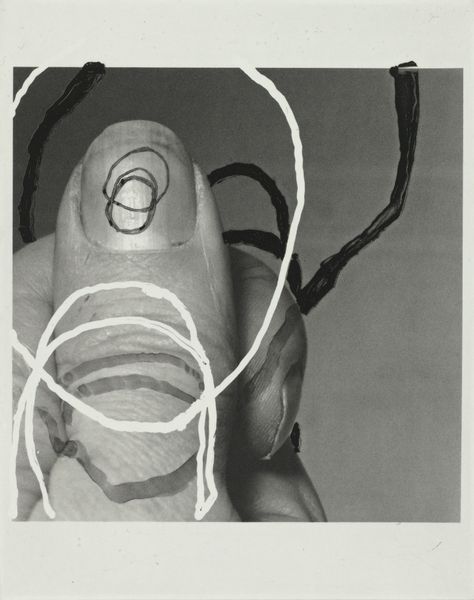
print, photography, rayograph
# print
#
sculpture
#
form
#
photography
#
dada
#
abstraction
#
line
#
rayograph
Dimensions: image: 26 × 20.5 cm (10 1/4 × 8 1/16 in.) mount: 37.5 × 27.5 cm (14 3/4 × 10 13/16 in.)
Copyright: National Gallery of Art: CC0 1.0
Curator: I find myself completely drawn into the graphic clarity of this image. Man Ray's "Salle a Manger" from 1931 presents a playful assemblage of form. Created using the rayograph technique, this print really exemplifies the innovative approach so emblematic of the Dada movement. Editor: It’s striking, that's for sure. There's a strong sense of disruption, almost aggression, in its composition, wouldn't you say? Especially given the period. The stark contrast and mechanical feel evokes the unease of industrial progress that permeated interwar art. Curator: Exactly. He harnesses the power of everyday objects, turning them into abstract symbols. It speaks to the Dadaist rejection of traditional artistic values. Here, the mundane is rendered alien. Editor: Alienating, perhaps intentionally so. Look how he reframes domesticity, transforming what should be familiar – salle a manger literally means dining room – into something cold and dehumanized. Consider the social anxieties bubbling beneath the surface at that time. The spectre of war and economic depression looming… this could be a commentary on the precariousness of the modern home. Curator: The "dining room" association is interesting and might be ironic because there's nothing conventionally dining related to decipher here. I read the tension differently—more like the psychological tension present when ordinary symbols become unrecognizable, imbued with layers of interpretation. The power of symbols shifts when context collapses. Editor: It's definitely ambiguous, deliberately forcing us to confront our own assumptions. Think of how societal structures often hinge on stable domestic spaces; upending that foundation is inherently subversive, right? And here, by removing all trace of the human, it exposes the inherent fragility of these constructs. Curator: I agree—and that destabilization pushes the viewer to find new patterns, connections, narratives within the form itself. It echoes Dada's broader attack on established systems of meaning. He presents us with raw materials for constructing meaning, leaving interpretation intentionally open. Editor: Which allows for a critical engagement with its socio-political implications, even now. Curator: Precisely, Man Ray creates visual riddles. We bring ourselves, our histories and associations, to bear. Editor: It still resonates deeply, disrupting any complacent viewing. It's an artifact of its era, and also a continuing challenge.
Comments
No comments
Be the first to comment and join the conversation on the ultimate creative platform.
